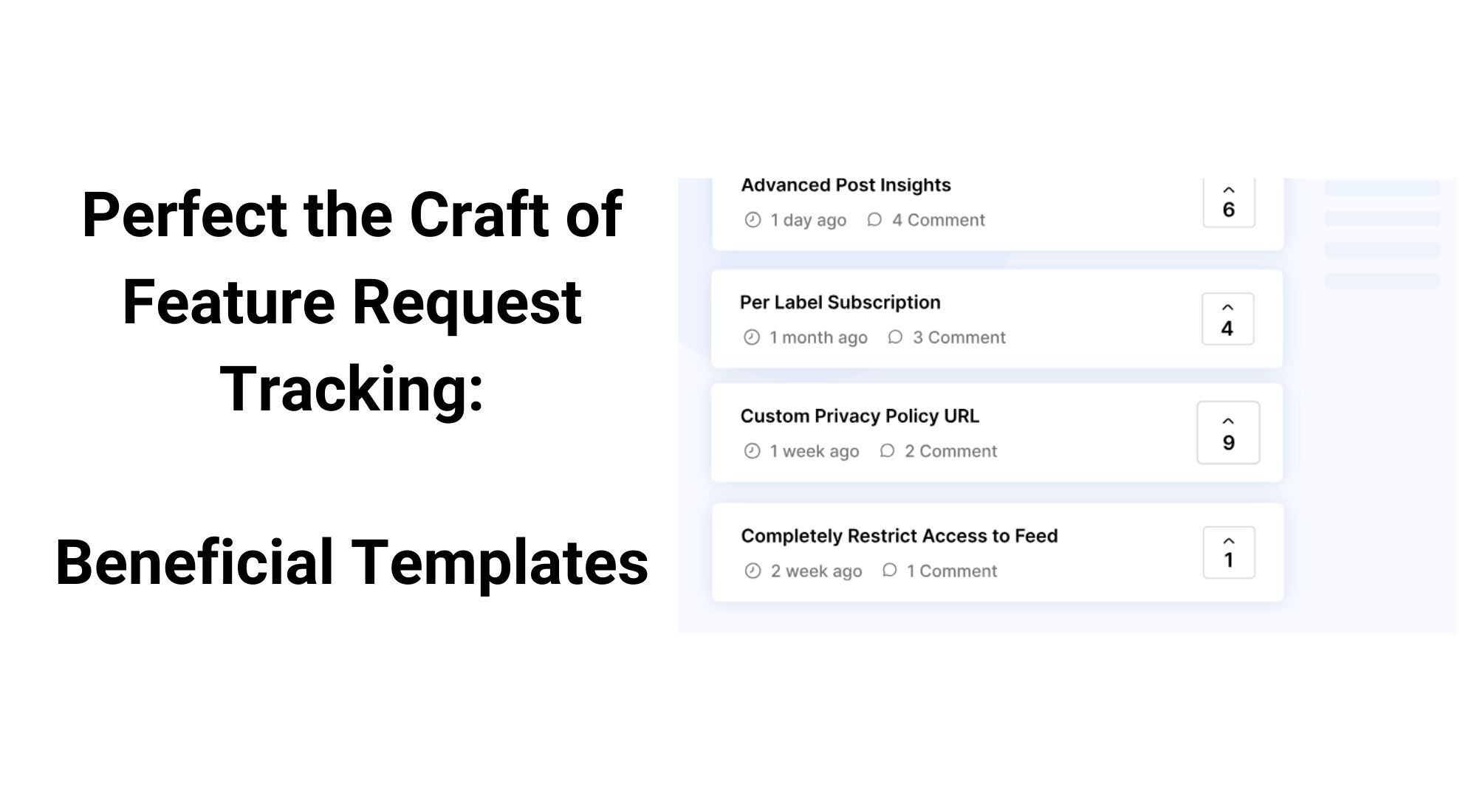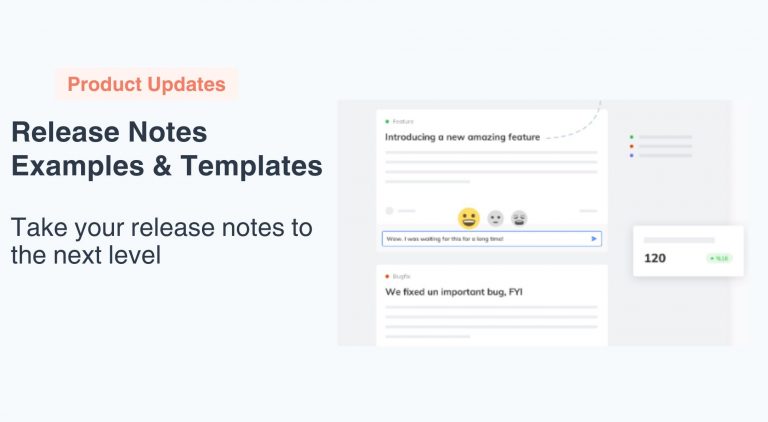Albus Dumbledore once said, “Words are, in my not-so-humble-opinion, our most inexhaustible source of magic.”
Fortunately, you don’t need to cast a spell to peer into the minds of your users.
Product feature request templates allow users to use the power of their feedback to help developers and project managers enhance and improve their products. Instead of making predictions based on market trends, product creators can use the magic of their consumers’ words to make adjustments to enhance user experience.
This article seeks to spell out the components of a good feature request template, what issues may be minimized by a good template, and how you can unlock the ultimate feature request tracking power.
Table of Contents
- Why You Should Be Using a Feature Request Template
- 4 Common Feature Request Issues That Can Be Minimized By Using a Feature Request Template
- What Should Be Included in a Feature Request?
- 5 Components To Include in a Good Feature Request Template
- Tips for Simplifying Feature Requests
- AnnounceKit Provides the Ultimate Way To Track Feature Requests

Quick Setup, Easy to Use, and Many Integrations
Manage your product announcements from a single place and easily distribute them
across multiple channels.
Why You Should Be Using a Feature Request Template
While the saying “the customer knows best,” may have become misconstrued in recent times, its meaning still rings true. The customer knows what they want in a product, and in a competitive economy — it’s best practice to use those wants and needs to create and enhance the most optimal products.
This is where feature requests come in.
Feature requests allow consumers to give feedback on a service or product.
Through feature requests, consumers have the ability to voice grievances, make suggestions, and feel like their preferred brands really listen and care. In turn, customers and clients receive a better user experience and brands receive a loyal and happy customer base.
A feature request template is a system for structuring the feedback your team receives from users. Without one, it can be incredibly difficult to collect, track, manage, and respond to feedback.
Feature request software makes it easy to:
- Track and manage feature request projects
- Manage multiple feature requests in one place
- Keep user updated on:
- Which feature requests have been made
- Which feature requests are being worked on
When they can expect feature updates to roll out AnnouceKit’s powerful feature request tool is a comprehensive solution to managing the whims and wishes of software as a service (SaaS) users. Our all-in-one feature request management system centralizes the feature request process making it easy to utilize feature requests to enhance your product and improve user experience.
4 Common Feature Request Issues That Can Be Minimized By Using a Feature Request Template
#1: Duplicate Requests
Duplicate requests occur when a new feature request is the same as a previous feature request that has already been made. When this happens, the nearly identical feature requests “split” the upvote.
In other words: wouldn’t it look better if one post had two or more upvotes instead of two or more similar posts with only one upvote on each?
Feature request management tools allow project managers to merge duplicate requests, which can help save time and better prioritize user feedback and requests.
By using a feature request template that makes suggestions based on keywords from similar requests, users can upvote and add feedback on existing requests.
#2: Request for Solutions for Not-Existent Issues
While the consumer’s voice is an important part of improving any product, sometimes users might get a little carried away with suggesting solutions for non-existent issues.
When users make overly sophisticated requests, it may be hard to discern what problem the suggestion is seeking to solve.
To remedy this, feature request templates centralize user-to-creator communications. This way, if you receive a request that seemingly does not solve a current issue, you can reach out to the user for further clarification.
Our feature request management also allows users to share more about their ideas with a screenshot.
#3: Off-Brand Suggestions
Your product is integral to your brand.
No matter how ingenious a feature request may be if it is not in line with your company’s vision or voice — it’s not a good feature request.
When a feature request falls out of the bounds of the company’s modus operandi, it can seem like the suggestion is asking for an entirely different product.
Feature request templates cannot help you say “no” to off-brand feature requests. They can, however, provide a platform where you answer this type of request in a way that represents your brand and turns down these requests as gracefully as possible
#4: Unnecessarily Complicated Suggestions
Often users may feel the need to make feature requests that hold many different suggestions in one. When the suggestion is upvoted or marked as “in progress”, there’s no way to indicate which features mentioned are being addressed.
Feature request templates give you the ability to catch and split complex feature requests early on.

Quick Setup, Easy to Use, and Many Integrations
Manage your product announcements from a single place and easily distribute them
across multiple channels.
What Should Be Included in a Feature Request?
To access the full power and potential, feature requests should be as descriptive and detailed as possible. A good feature request includes:
- Clear statements on what the feature request will look like or be
- Details on how the feature may work
- Explanations for the problem the feature request will address
- Descriptions of scenarios that show how the feature might work in action
To ensure that the above-mentioned can be achieved, project managers and developers should ask that users create feature requests that include a:
- Clear and concise title
- Detailed description
- Contributor contact information
- Screenshots or other visual aides
- Categories and flairs
5 Components To Include in a Good Feature Request Template
#1: A Clear and Concise Title
Feature requests need a relevant name and title to help other users and project developers recognize what the feature request involves.
Titles can be a few words long or even a full sentence. The main goal is that the title is identifiable, concise, and clear. Poorly written or ambiguous titles may lead to duplicate feature requests.
#2: A Detailed Description
The description field of a feature request is where users can fully air their concerns, suggestions, and ideas.
A well-written feature request description might describe:
- The current issue
- Examples of the issue
- The Desired outcome
- The benefits of change
The better the description, the less back-and-forth will be needed to get clarification from the user about the feature request. When creating your feature request template, you may want to consider adding a placeholder text that instructs your users on how to write good feature descriptions.
#3: Author Contact Information
By requiring your users to provide contact information, you can:
- Keep track of your most active contributors
- Curb inappropriate comments through user accountability
- Have another means of contacting contributors to seek insight and provide updates
Author contact information can be as simple as just a name or more comprehensive and include other points of contact like email.
#4: Screenshots for Clarification
Some issues are better expressed through visual means.
Not all users have the ability to clearly convey their user requests, Some may not be so eloquent when speaking about technical topics. Others may not speak your language and might use a translator to submit their quests.
By uploading screenshots regarding their feature requests, your users will be able to clearly and accurately convey their thoughts and ideas.
#5: Categories
The last and possibly most important field in a good feature request is a category, flair, or tag field.
Content tags help organize and group topics so that moderators and developers can easily discern which requests are high priority. There are four main categories of requests you’ll likely receive, which include:
- Feature requests
- Bug reports
- Improvement ideas
- Change requests
Tips for Simplifying Feature Requests
You can successfully manage feature requests by:
- Centralizing your entire feature request process: Consolidate your multiple channels of client/user communication to effectively manage feedback.
- Routinely monitoring requests: If you let feature requests pile up, helpful feature requests may fall through the cracks. Be sure to check your feedback boards at least once a week to keep your finger on the pulse of your consumers.
- Simplifying your feature request forms: Don’t gate-keep your feature request templates. Your users are going to feel less inclined to share feedback if they have to create an account or jump through a bunch of hoops.
- Utilizing feature request voting: Feature voting may be a great way to streamline your feedback board but it also saves time, leads to better product development, and increases engagement. Voting also gives the opportunity for other users to give a second opinion on other contributor’s feedback requests.
- Communicating requests with users: Your users are taking time to give your product feedback. It is your duty, as a product manager or developer, to take time to respond to their feedback. Whether you’re asking for clarification, giving updates, or answering questions, contributors want to feel that their requests are being acknowledged.
- Keeping your feedback boards organized: A standard formatting system for feature requests makes it easier for users to find and vote on feature requests instead of creating duplicates.
- Merging duplicate requests: Manage duplicate requests by merging them. Remember to notify contributors about the merge so remain informed about the progress of their feature request.
- Optimizing group requests with tags: Tags can help you organize different requests by creating groups for similar requests like bug reports, improvements, etc.
- Using AnnounceKit to do all of the above and more!
AnnounceKit Provides the Ultimate Way To Track Feature Requests
A successful feature request campaign is product-enhancement forwards. If you’re stuck focusing on the back end of things, you miss opportunities for innovation.
Coveted product management hours shouldn’t be spent on building a feature request management process from scratch — not juggling emails, sifting through 3rd party forms and surveys, or making spreadsheets.
Our intuitive feature request dashboard can help you easily manage and prioritize feature requests as well as help you:
- Receive in-app feedback notifications
- Integrate feedback forms
- Gather and interpret data
- Provide feature request updates
- And more
AnnounceKit can help you run a feature request campaign that could improve your product and client relations like magic.
Get the magic touch with AnnounceKit. Start your free trial today.

Quick Setup, Easy to Use, and Many Integrations
Manage your product announcements from a single place and easily distribute them
across multiple channels.







